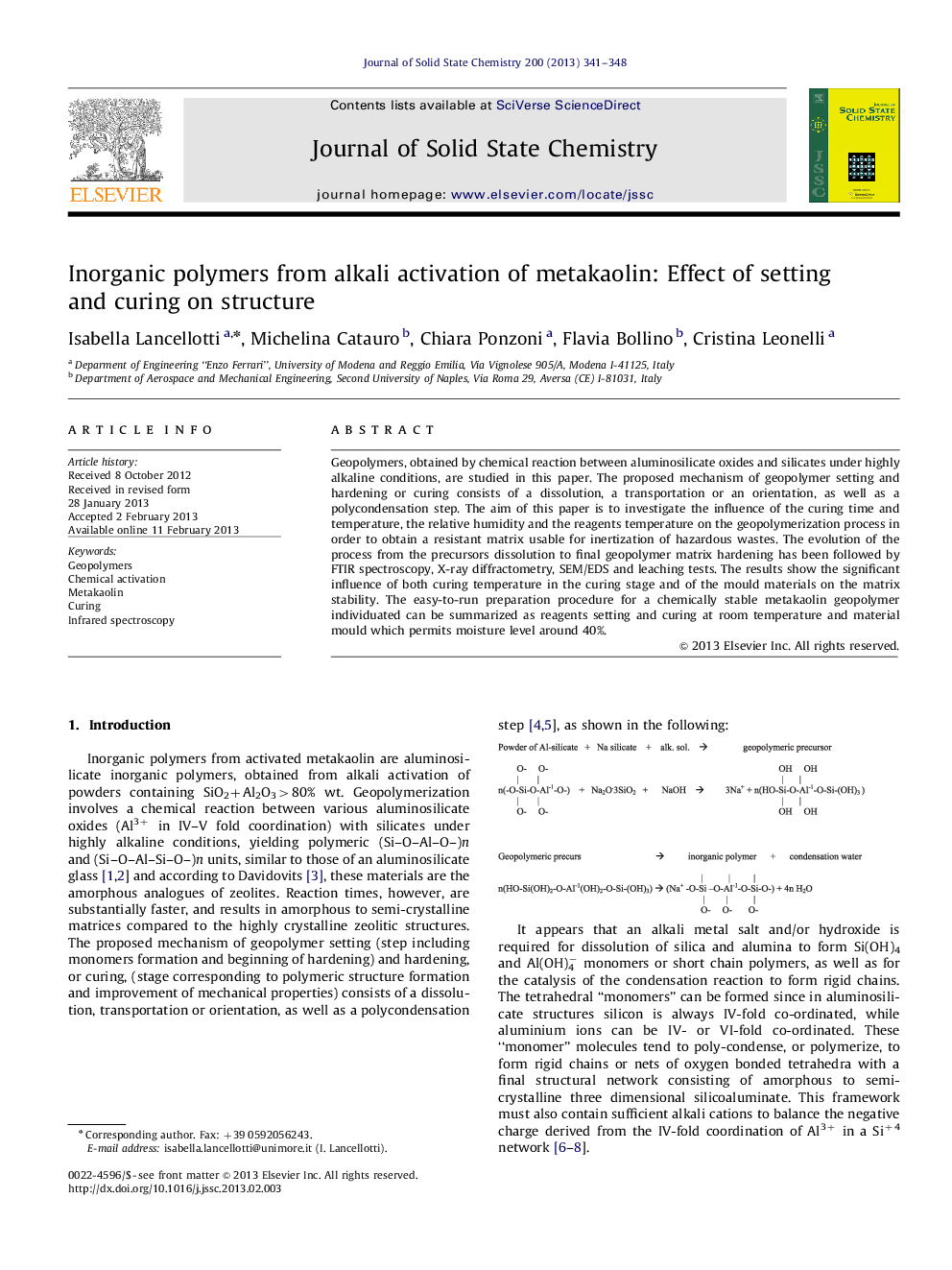| Article ID | Journal | Published Year | Pages | File Type |
|---|---|---|---|---|
| 1331231 | Journal of Solid State Chemistry | 2013 | 8 Pages |
Geopolymers, obtained by chemical reaction between aluminosilicate oxides and silicates under highly alkaline conditions, are studied in this paper. The proposed mechanism of geopolymer setting and hardening or curing consists of a dissolution, a transportation or an orientation, as well as a polycondensation step. The aim of this paper is to investigate the influence of the curing time and temperature, the relative humidity and the reagents temperature on the geopolymerization process in order to obtain a resistant matrix usable for inertization of hazardous wastes. The evolution of the process from the precursors dissolution to final geopolymer matrix hardening has been followed by FTIR spectroscopy, X-ray diffractometry, SEM/EDS and leaching tests. The results show the significant influence of both curing temperature in the curing stage and of the mould materials on the matrix stability. The easy-to-run preparation procedure for a chemically stable metakaolin geopolymer individuated can be summarized as reagents setting and curing at room temperature and material mould which permits moisture level around 40%.
Graphical abstractChemical stability as a function of curing conditions.Figure optionsDownload full-size imageDownload as PowerPoint slideHighlights► Metakaolin in highly alkaline solutions produced solid materials at room temperature. ► Curing time and temperature, relative humidity, reagents temperature were optimized. ► Leaching tests were used to confirm final hardening. ► FTIR spectroscopy, SEM analysis and X-ray diffractometry were used to interpret matrix stability.
